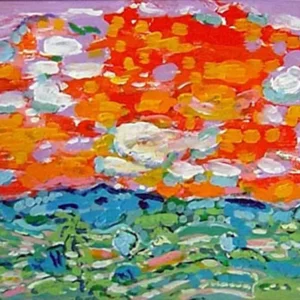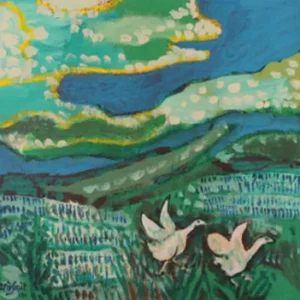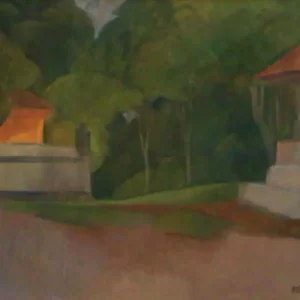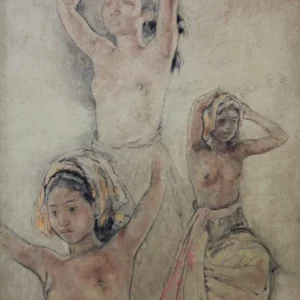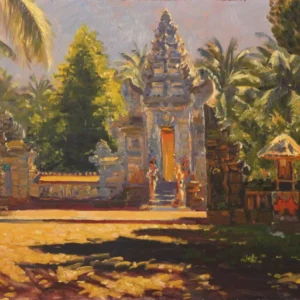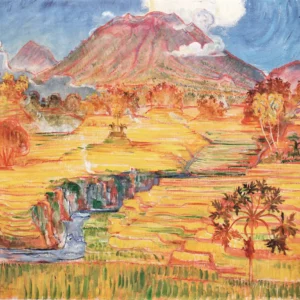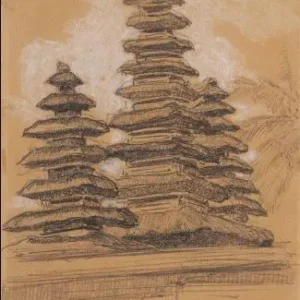Arie Smith was the third of eight children of a trader in cheese and confectionery. His family moved in 1924 from Zaandam to Rotterdam, where Smith eventually studied graphic design at the Academy of Arts. In his youth he was most inspired by the work of three artists named Paul (Signac, Gauguin and Cezanne). He was sent to the Dutch East Indies for military service in 1938, where he worked as a lithographer for the Dutch army’s Topographical Service in Batavia, engraving relief maps of the archipelago. Etching Balinese mountains onto maps ignited his desire to one day go to Bali. In early 1942 Smith was transferred to the infantry in East Java, but was soon captured by the invading Japanese forces. He spent three and a half years in forced labor camps building roads, bridges, and railways in Singapore, Thailand, and Burma. After the war ended in 1945, Smith was released and returned to the new Republic of Indonesia. He became an Indonesian citizen in 1951 and taught graphics and lithography at the Institut Teknologi Bandung in West Java. On invitation by the well-connected art dealer Jim Pandy he finally visited Bali in 1956, staying in Sanur. Sukarno himself would sometimes bring his state guests to his small gallery. With his love for bright colors, Smith was captured by the Balinese landscapes in its ‘riotous light’, and soon decided to stay to depict its villages, rice terraces, palm trees and temples. In 1960, while touring the countryside of the Ubud district where he then lived, he came upon some boys drawing in the sand. Impressed by their talent, Smith invited them to his studio, where they promptly became the first of a growing number of students. With minimal instruction but lots of encouragement and material support, his pupils created a naive style of genre painting that became known as the ‘Young Artists’ style, which at its peak had 300-400 followers. Though he is considered the father of the movement, its style is quite different than any of Smith’s own styles over the years. Smith finally settled near Ubud in the village of Sanggingan. In recognition for his role in the development of painting on the island, Smith received the Dharma Kusuma (Society of National Heroes) award in 1992 from the government of Bali
Showing all 2 results


